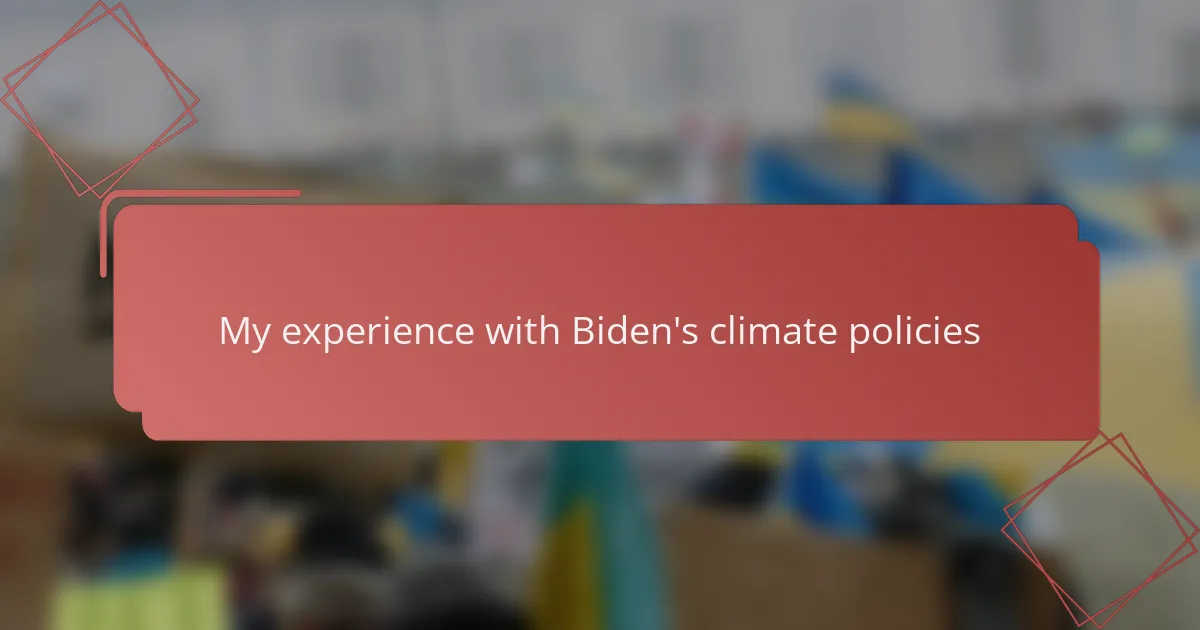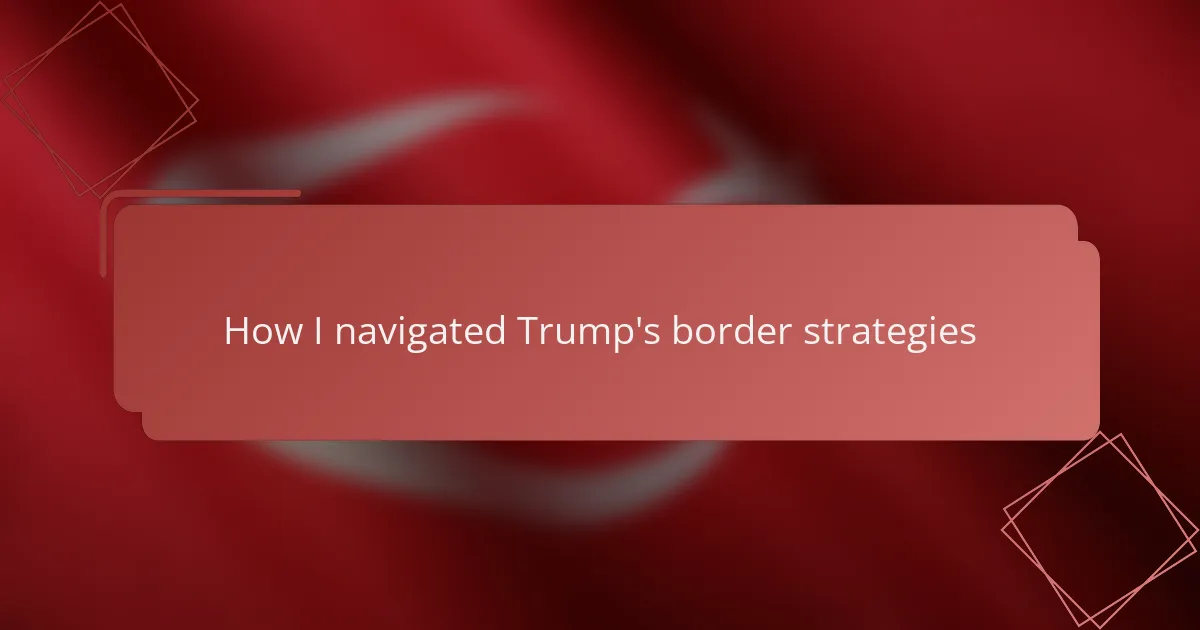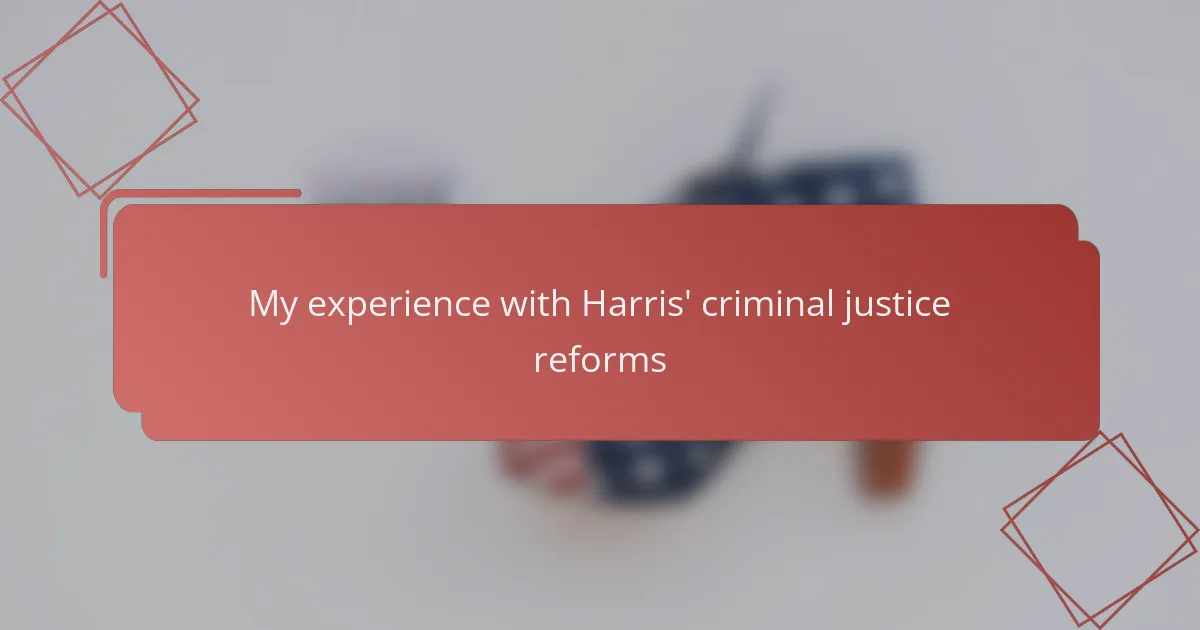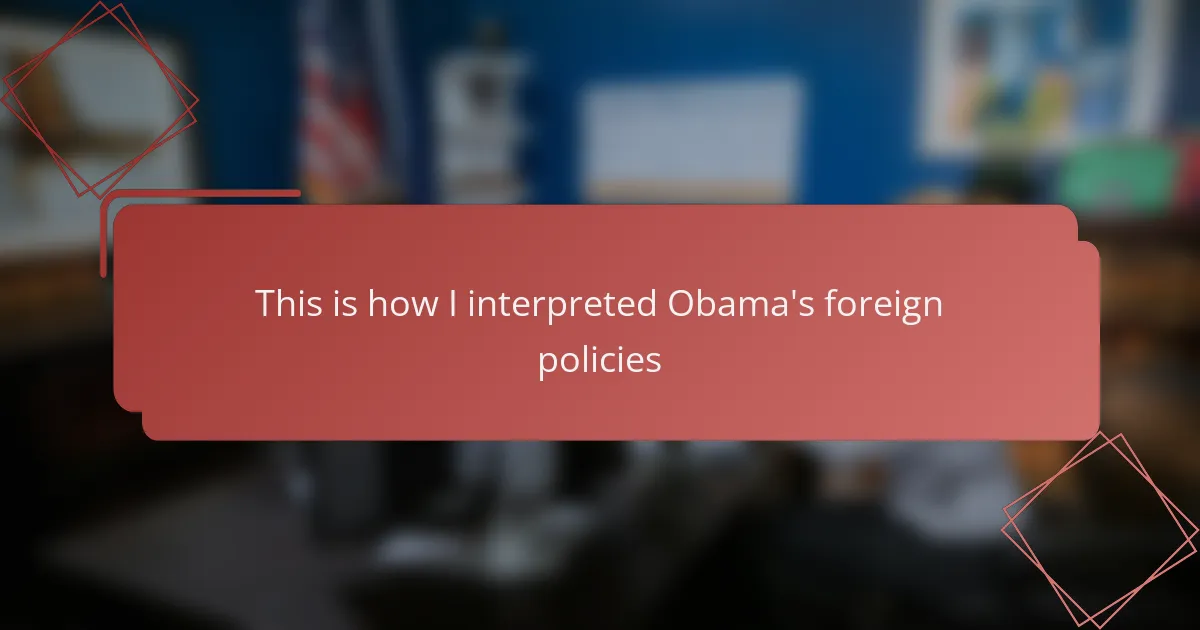Key takeaways
- Political satire dissects political humor, using irony and exaggeration to expose flaws in policies and engage audiences emotionally.
- Biden’s climate policies emphasize reducing carbon emissions, ensuring justice for vulnerable communities, and fostering innovation, but face challenges in execution.
- Satire effectively highlights the disconnect between ambitious climate rhetoric and real-world outcomes, prompting critical reflection and public dialogue.
- Humor in satire enhances accessibility and relatability, making discussions around complex issues like climate policy more engaging for a broader audience.
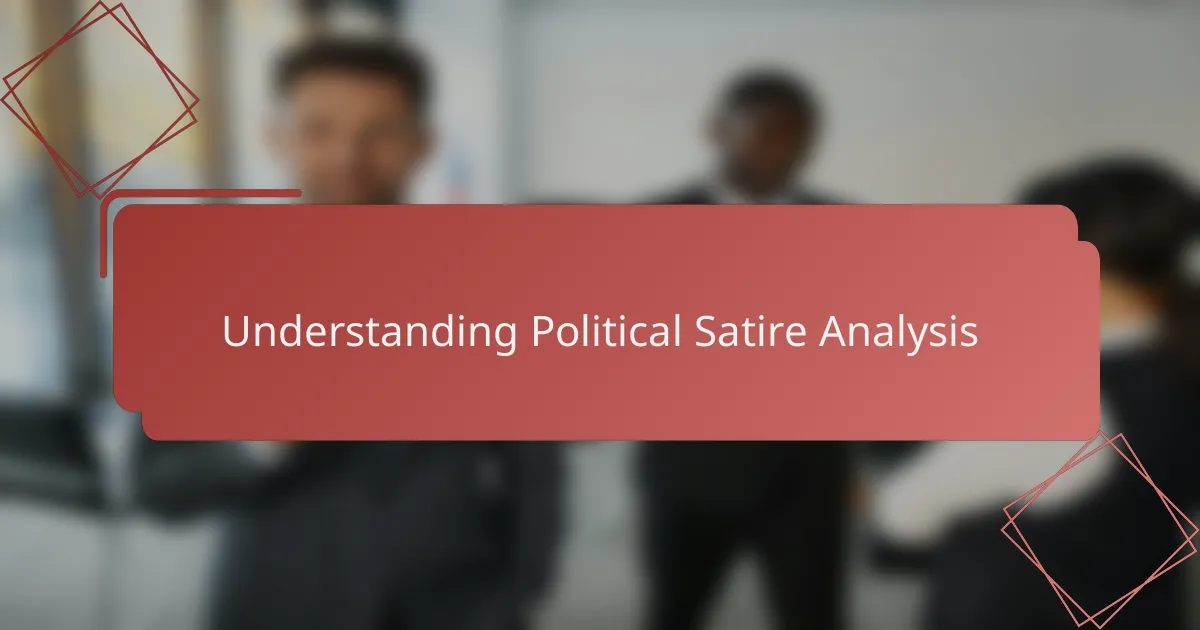
Understanding political satire analysis
Political satire analysis involves dissecting humor that targets political figures or policies, revealing deeper truths through wit. When I first explored this field, I was struck by how satire can expose contradictions in a way straightforward critique often cannot—it’s like a spotlight on political absurdities, making them both entertaining and thought-provoking.
What fascinates me most is how satire blends sarcasm, irony, and exaggeration to challenge public perceptions. Analyzing these elements requires a sharp eye and an open mind, as humor often masks complex critiques beneath a playful surface.
- Highlights the contradictions and flaws in political policies
- Uses humor to make serious issues more approachable
- Combines irony, sarcasm, and exaggeration for deeper impact
- Engages audiences emotionally while encouraging critical thinking
- Requires careful interpretation to uncover the intended message
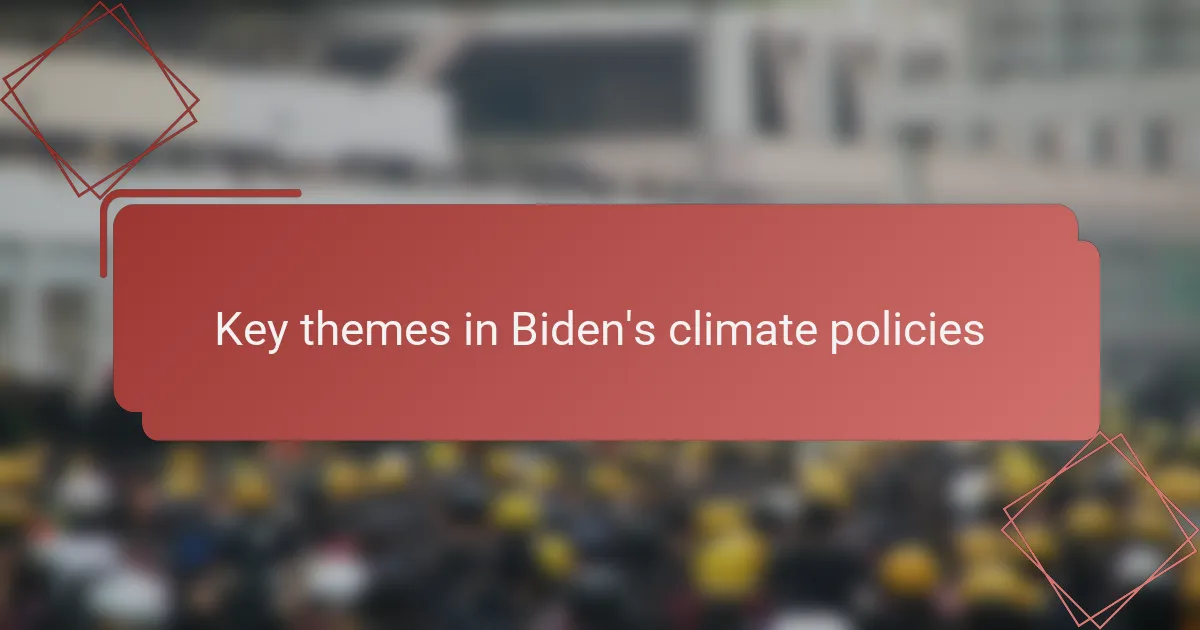
Key themes in Biden’s climate policies
Biden’s climate policies often revolve around a few key themes that aim to redefine America’s environmental future. For me, the emphasis on reducing carbon emissions through a push for clean energy felt like a sincere attempt to tackle what’s arguably the biggest challenge of our time. But isn’t it curious how ambitious targets sometimes clash with political and economic realities?
Another theme I noticed is the focus on justice—making sure that the transition to greener energy doesn’t leave vulnerable communities behind. This struck a chord with me because it reflects a more human side of policymaking, yet it also raised questions about how effectively those promises are put into action. After all, good intentions don’t always translate into smooth implementation.
The drive for innovation is also central, encouraging investments in new technologies to combat climate change. I found it intriguing how this ambition mixes hope with uncertainty—can breakthroughs in clean tech really keep pace with the urgent timelines we face? It’s a theme layered with optimism but tethered to a very complex reality.
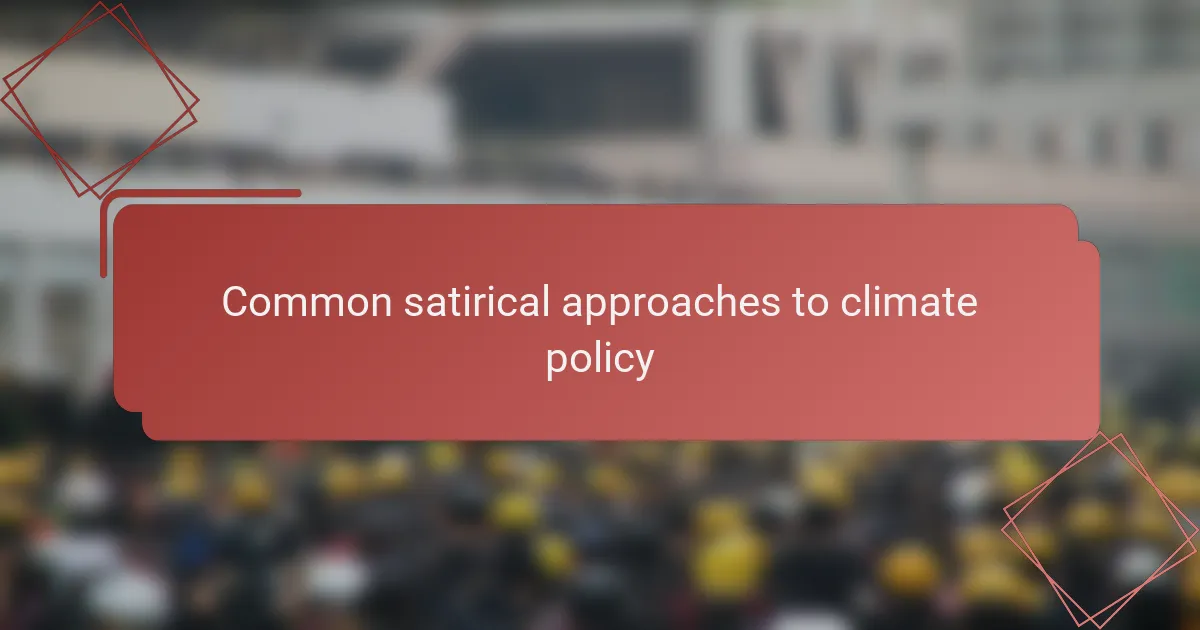
Common satirical approaches to climate policy
Satirical takes on climate policy often highlight the disconnect between political promises and tangible results. From my own observations, comedians and writers tend to exaggerate the grandiosity of initiatives, turning lofty speeches into farcical monologues about inaction disguised as action. This approach resonates because it mirrors the frustration many of us feel when policies seem more performative than practical.
One common tactic I’ve noticed is the use of absurd hypotheticals—like imagining a world where everyone drives electric cars but still uses coal power for their homes. It’s a clever way to expose the contradictions and loopholes that can undermine genuine progress. Such satire blends humor with critique, making complex issues more relatable and prompting us to question real-world effectiveness.
- Exaggeration of political rhetoric versus actual outcomes
- Highlighting contradictions within policy implementation
- Depiction of symbolic gestures in place of substantive change
- Use of absurd or ironic scenarios to expose loopholes
- Personalizing climate impacts to underscore emotional disconnect
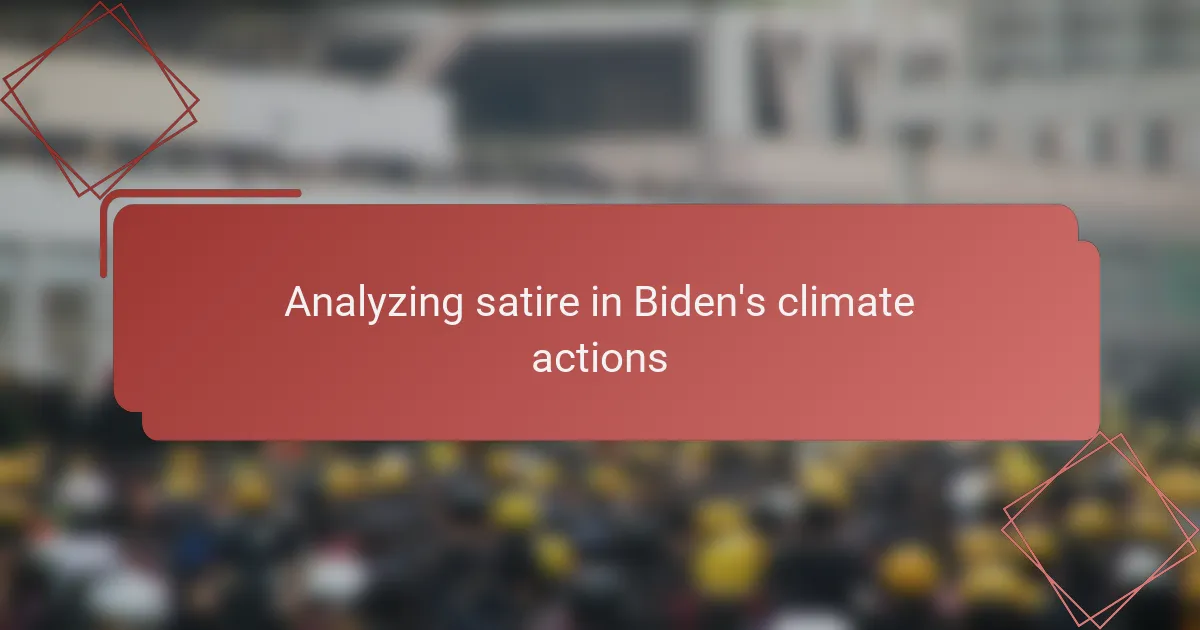
Analyzing satire in Biden’s climate actions
Analyzing satire in Biden’s climate actions reveals a fascinating blend of earnest intention and ironic outcomes. From my perspective, the satirical edge often lies in the contrast between grandiose promises and the painfully slow pace of tangible change. It’s like watching a well-meaning but clumsy dancer fumbling to keep rhythm—frustrating yet oddly endearing.
This tension fuels much of the humor and critique I’ve encountered in political satire, highlighting how ambitious climate policies sometimes collide with bureaucratic inertia or conflicting interests. For example, I recall a skit lampooning Biden’s electric vehicle push while gas prices soared—a sharp, relatable jab that struck a chord in how priorities play out in real life.
Key satirical themes include:
– The gap between ambitious rhetoric and policy execution
– Symbolic gestures overshadowing systemic change
– The balancing act between environmental goals and economic pressures
– The portrayal of climate initiatives as performative rather than transformative
– The public’s mixed feelings of hope, skepticism, and impatience
– Political theater that reveals contradictions in policy messaging

My perspective on satire effectiveness
My experience with Biden’s climate policies has often been a mix of frustration and amusement, especially when viewed through the lens of political satire. I find satire to be a sharp tool that effectively highlights the complexities and contradictions in these policies. At times, it feels like satire captures the contradictions better than official explanations ever could, making the climate debate more accessible and emotionally engaging for me.
| Satire Aspect | Effectiveness in Climate Policy Context |
|---|---|
| Clarity | Makes complex policies relatable and easier to understand through humor |
| Emotional Impact | Engages feelings of frustration and hope, reflecting public sentiment |
| Critical Insight | Exposes contradictions and gaps in policy with wit, prompting deeper reflection |
| Accessibility | Reaches a broader audience beyond traditional political discussions |
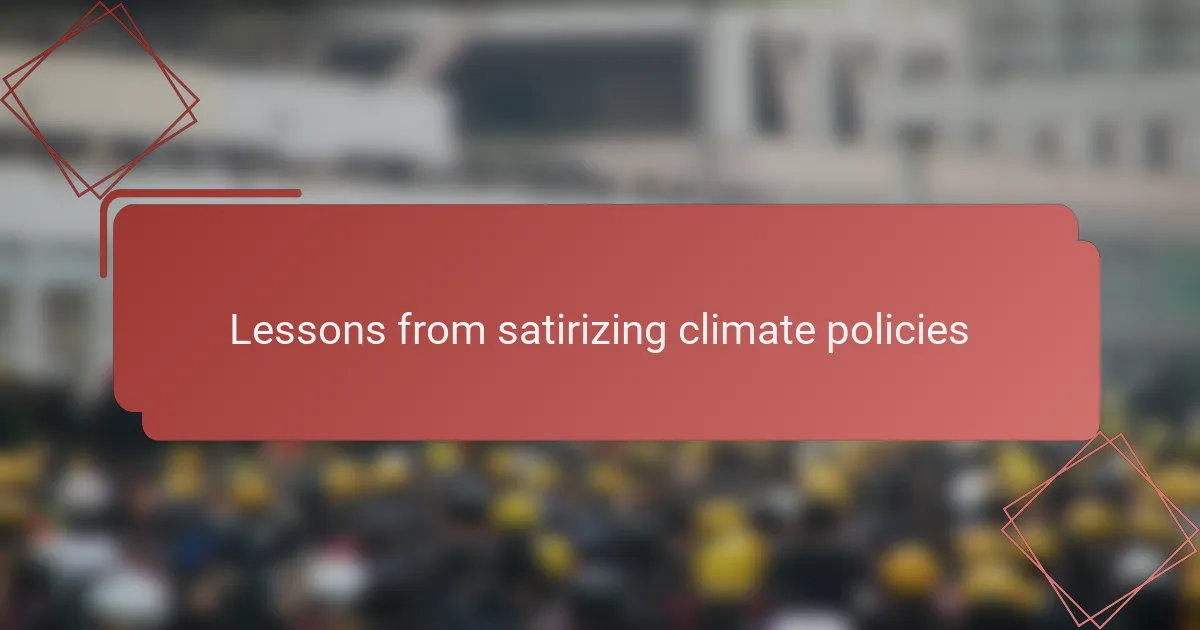
Lessons from satirizing climate policies
Satirizing Biden’s climate policies taught me that humor can be a powerful tool to reveal the contradictions within political promises. I found that by exaggerating certain aspects—like ambitious carbon reduction targets paired with continued fossil fuel support—I was able to expose the practical challenges these policies face, making the critique both entertaining and thought-provoking.
One surprising lesson was how satire highlighted public frustration with the slow pace of tangible results. When I joked about endless climate summits producing little change, it wasn’t just for laughs; it echoed a shared impatience I’ve sensed in real conversations. This emotional connection gave my satire more bite, encouraging readers to reflect on the gap between rhetoric and reality.
- Satire exposes gaps between lofty goals and policy realities
- Humor engages audiences emotionally, making complex issues relatable
- Exaggeration uncovers contradictions often overlooked in serious debates
- Satirical critique can spark deeper public dialogue about policy effectiveness
- Personal anecdotes in satire create empathy and enhance impact
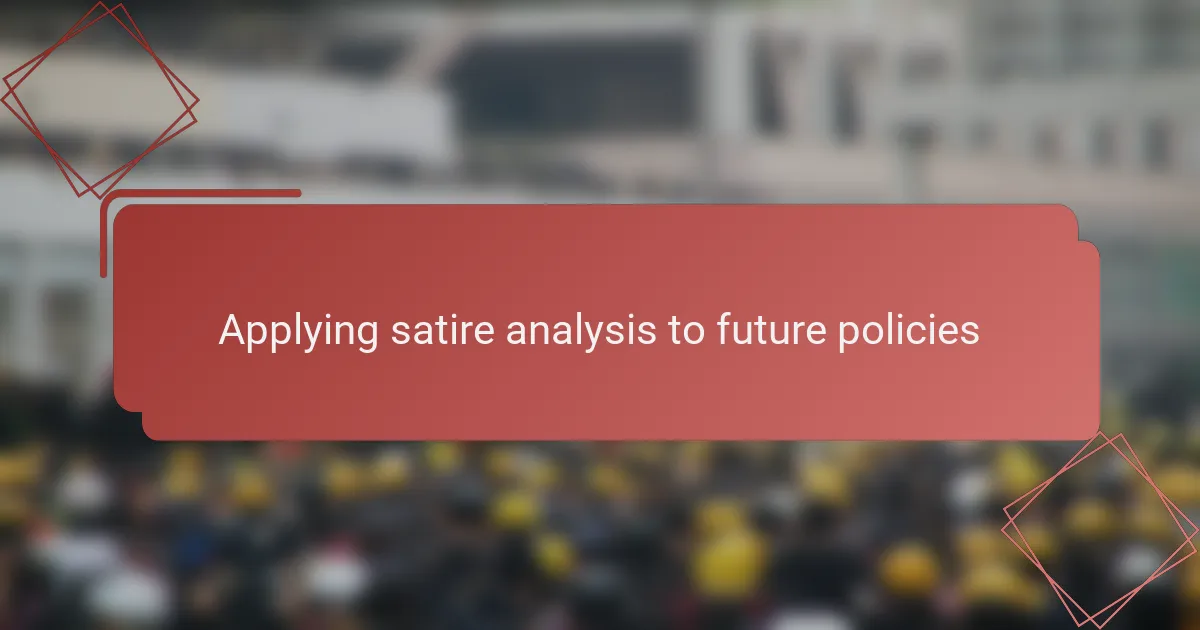
Applying satire analysis to future policies
When I consider how satire can shape our understanding of future climate policies, I find that humor often highlights the gap between political promises and real-world outcomes. For instance, during some of Biden’s speeches, satirical commentary pointed out the irony of promoting green energy while still relying heavily on subsidies for fossil fuels. This kind of analysis not only entertains but also sharpens our critical eye toward policy effectiveness.
Satire pushes us to ask tough questions: Are these policies genuinely transformative, or do they merely serve as political theater? From my experience watching debates unfold, satire often reveals the contradictions that serious reports might overlook. It’s like having a friend who calls out the obvious yet uncomfortable truths, making the political jargon more relatable and digestible.
Key ways satire can inform future climate policy analysis:
– Exposing contradictions between rhetoric and implementation
– Highlighting unintended consequences through exaggeration
– Simplifying complex issues with humor for broader engagement
– Encouraging public skepticism and active discussion
– Revealing the emotional impact of policies on everyday citizens, including frustrations and hopes
